
How to Use IRF510: Examples, Pinouts, and Specs
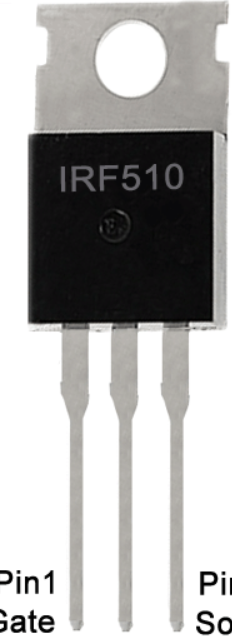
 Design with IRF510 in Cirkit Designer
Design with IRF510 in Cirkit DesignerIntroduction
The IRF510 is an N-channel MOSFET (Metal-Oxide-Semiconductor Field-Effect Transistor) manufactured by Vishay Intertechnology. It is widely used in electronic circuits for switching and amplification purposes. With its low on-resistance, high voltage, and current handling capabilities, the IRF510 is ideal for power applications such as motor control, power supplies, and audio amplifiers.
Explore Projects Built with IRF510
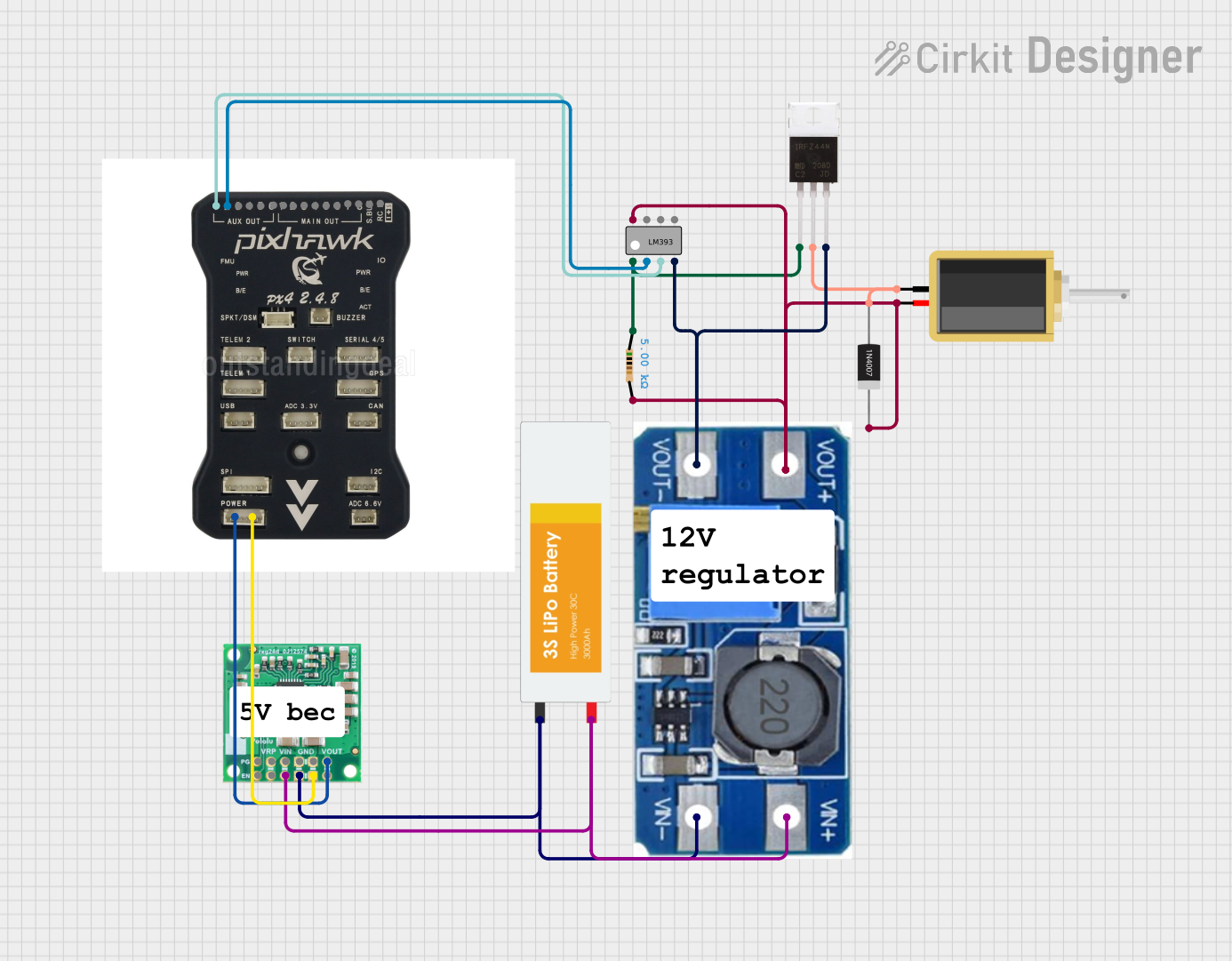
 Open Project in Cirkit Designer
Open Project in Cirkit Designer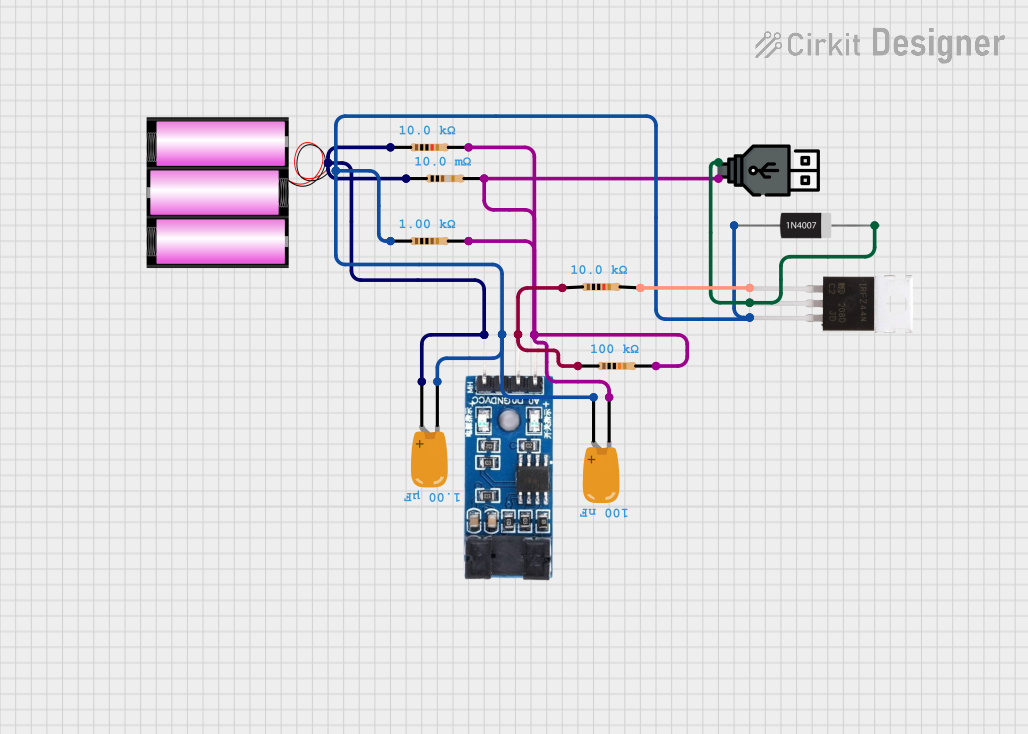
 Open Project in Cirkit Designer
Open Project in Cirkit Designer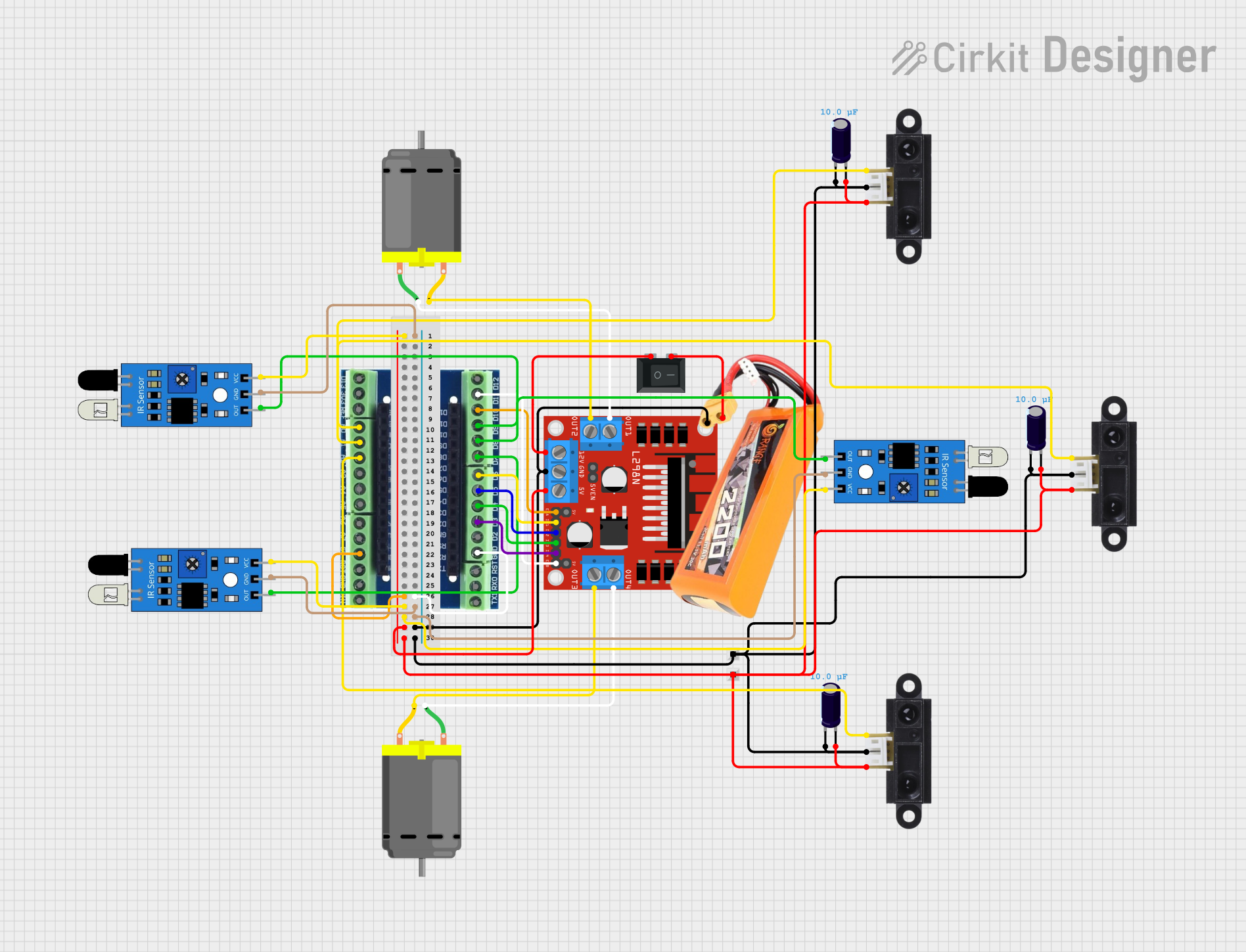
 Open Project in Cirkit Designer
Open Project in Cirkit Designer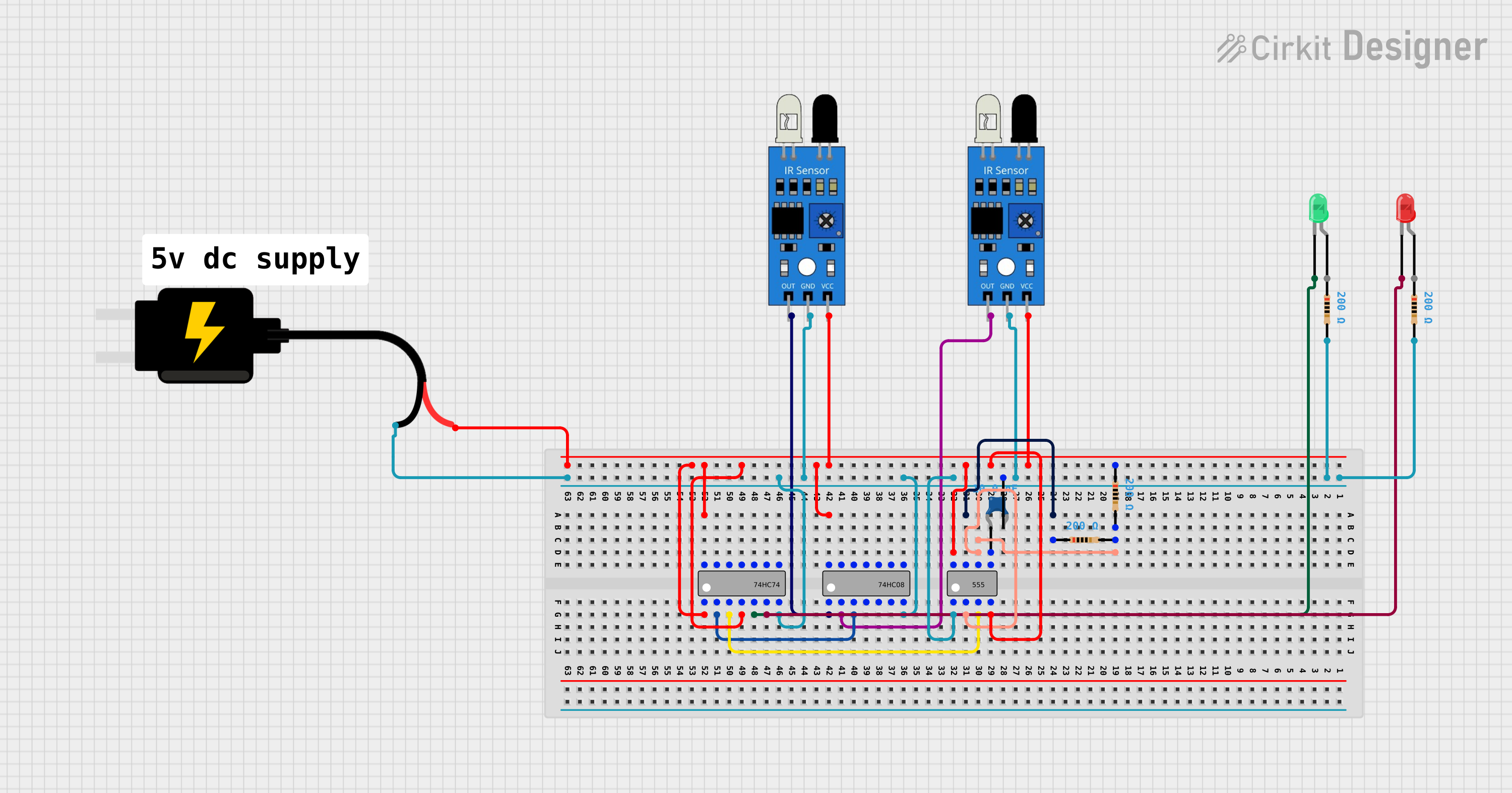
 Open Project in Cirkit Designer
Open Project in Cirkit DesignerExplore Projects Built with IRF510

 Open Project in Cirkit Designer
Open Project in Cirkit Designer
 Open Project in Cirkit Designer
Open Project in Cirkit Designer
 Open Project in Cirkit Designer
Open Project in Cirkit Designer
 Open Project in Cirkit Designer
Open Project in Cirkit DesignerCommon Applications
- DC motor drivers
- Switching power supplies
- Audio amplifiers
- LED drivers
- General-purpose switching in high-power circuits
Technical Specifications
The IRF510 is designed to operate efficiently in high-power applications. Below are its key technical specifications:
| Parameter | Value |
|---|---|
| Manufacturer | Vishay Intertechnology |
| Part Number | IRF510 |
| Type | N-Channel MOSFET |
| Maximum Drain-Source Voltage (VDS) | 100V |
| Maximum Gate-Source Voltage (VGS) | ±20V |
| Continuous Drain Current (ID) | 5.6A (at 25°C) |
| Pulsed Drain Current (IDM) | 20A |
| Power Dissipation (PD) | 43W (at 25°C) |
| RDS(on) (On-Resistance) | 0.54Ω (typical) |
| Gate Threshold Voltage (VGS(th)) | 2.0V - 4.0V |
| Operating Temperature Range | -55°C to +175°C |
| Package Type | TO-220 |
Pin Configuration
The IRF510 is housed in a TO-220 package with three pins. The pinout is as follows:
| Pin Number | Pin Name | Description |
|---|---|---|
| 1 | Gate (G) | Controls the MOSFET's switching state |
| 2 | Drain (D) | Current flows from drain to source |
| 3 | Source (S) | Connected to ground or load return path |
Usage Instructions
The IRF510 is straightforward to use in circuits, but proper design considerations are essential to ensure optimal performance and reliability.
How to Use the IRF510 in a Circuit
- Gate Control: Apply a voltage to the Gate (Pin 1) to control the MOSFET. A voltage above the gate threshold (typically 2-4V) will turn the MOSFET on, allowing current to flow between the Drain (Pin 2) and Source (Pin 3).
- Load Connection: Connect the load between the Drain (Pin 2) and the positive supply voltage. The Source (Pin 3) is typically connected to ground.
- Gate Resistor: Use a resistor (e.g., 220Ω to 1kΩ) in series with the Gate to limit inrush current and protect the driving circuit.
- Flyback Diode: For inductive loads (e.g., motors, relays), add a flyback diode across the load to protect the MOSFET from voltage spikes.
Example Circuit with Arduino UNO
The IRF510 can be controlled using an Arduino UNO to switch a DC motor. Below is an example circuit and code:
Circuit Connections
- Gate (Pin 1): Connect to an Arduino digital pin (e.g., D9) through a 220Ω resistor.
- Drain (Pin 2): Connect to one terminal of the motor.
- Source (Pin 3): Connect to ground.
- Motor: Connect the other terminal to the positive supply voltage.
- Flyback Diode: Place a diode (e.g., 1N4007) across the motor terminals, with the cathode connected to the positive supply.
Arduino Code
// IRF510 MOSFET Control Example
// This code demonstrates how to control a DC motor using the IRF510 MOSFET
// and an Arduino UNO. The motor speed is controlled via PWM.
const int motorPin = 9; // Pin connected to the Gate of the IRF510
void setup() {
pinMode(motorPin, OUTPUT); // Set the motor pin as an output
}
void loop() {
// Gradually increase motor speed
for (int speed = 0; speed <= 255; speed++) {
analogWrite(motorPin, speed); // Write PWM signal to the Gate
delay(10); // Small delay for smooth acceleration
}
delay(1000); // Run at full speed for 1 second
// Gradually decrease motor speed
for (int speed = 255; speed >= 0; speed--) {
analogWrite(motorPin, speed); // Write PWM signal to the Gate
delay(10); // Small delay for smooth deceleration
}
delay(1000); // Wait for 1 second before repeating
}
Important Considerations
- Gate Drive Voltage: The IRF510 requires a Gate-Source voltage of at least 10V for full enhancement. It may not perform optimally with 5V logic levels (e.g., from an Arduino). Consider using a logic-level MOSFET or a Gate driver circuit if operating at 5V.
- Heat Dissipation: Use a heatsink with the IRF510 to manage heat dissipation, especially when operating at high currents.
- Voltage Spikes: Protect the MOSFET from voltage spikes using appropriate snubber circuits or diodes.
Troubleshooting and FAQs
Common Issues
MOSFET Not Turning On
- Cause: Insufficient Gate-Source voltage.
- Solution: Ensure the Gate voltage is at least 10V for full enhancement. Use a Gate driver if necessary.
Excessive Heat
- Cause: High current or inadequate cooling.
- Solution: Attach a heatsink to the MOSFET and ensure proper ventilation.
Motor Not Running
- Cause: Incorrect wiring or insufficient power supply.
- Solution: Double-check all connections and ensure the power supply can handle the motor's current requirements.
MOSFET Damaged
- Cause: Voltage spikes from inductive loads.
- Solution: Add a flyback diode across the load to protect the MOSFET.
FAQs
Q: Can the IRF510 be used with 3.3V or 5V logic levels?
A: The IRF510 is not a logic-level MOSFET and requires a Gate-Source voltage of at least 10V for full enhancement. Use a Gate driver or a logic-level MOSFET for 3.3V or 5V systems.
Q: What is the maximum current the IRF510 can handle?
A: The IRF510 can handle a continuous current of 5.6A at 25°C. However, ensure proper cooling to avoid overheating.
Q: Do I need a heatsink for the IRF510?
A: Yes, a heatsink is recommended when operating at high currents or power levels to prevent thermal damage.
Q: Can the IRF510 be used for audio amplification?
A: Yes, the IRF510 is suitable for audio amplification applications due to its low on-resistance and high power handling capabilities.